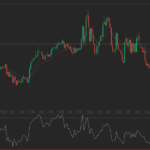West Texas Intermediate and Brent crude slid for the first time in five days, ending a streak that brought prices up by about 20%, as downbeat China data revived concerns of softer oil demand, while private figures showed another hefty gain in US crude oil inventories.
West Texas Intermediate for delivery in March traded 1.83% lower at $52.08 per barrel at 8:18 GMT, trading in a daily range of $52.56-$51.65. The contract surged for a fourth day on Tuesday to $53.05, the highest settlement since January 1st, capping an 18.3% gain for the stretch.
Meanwhile on the ICE, Brent for delivery in the same month fell 0.95% to $57.36 per barrel, ranging between $58.06 and $57.19 during the day. The contract gained 5.77% on Tuesday to $57.91, the highest settlement since end-December. Brent traded at a premium of $5.28 to its US counterpart, up from yesterdays close at $4.86.
Oil prices rebounded from recent 6-year lows on hopes that a record cut in the number of US drilling sites and further reductions in oil companies capital expenditures will curb shale output and balance out the market. Data by Baker Hughes Inc. showed on January 30th that US drillers idled 94 oil rigs in a week, the most since the company began tracking data in 1987, sending the total number of operating units to the lowest in three years.
Meanwhile, BP, ConocoPhillips, Chevron and Royal Dutch Shell announced cuts in investment plans. Chevron slashed its drilling budget by the most in 12 years, while also delaying shale projects.
Fatih Birol, the International Energy Agencys Chief Economist, said that total investment in oil projects may be cut by 15%, or $100 billion, this year. The IEA trimmed its outlook for non-OPEC supply growth in 2015 by 350 000 barrels per day to 950 000 bpd.
However, although lower spending on projects will slow supply growth in the coming years, this doesnt resolve the immediate global overhang, analysts say. Banks, including Societe Generale and UBS Group, predict that the current rally is only temporary as the market remains oversupplied.
Record inventories
Giovanni Staunovo, a commodities analyst at UBS in Zurich, said for Bloomberg: “We don’t think we’ve seen the bottom yet. We expect U.S. commercial crude oil stocks to hit a new 84-year high on Wednesday, while U.S. oil production is likely to stay strong in the near term.”
US crude output jumped by 27 000 barrels per day to 9.213 million bpd in the week ended January 23rd, a record for weekly statistics tracked since January 1983. Crude supplies rose by 8.874 million barrels during the same week to 406.7 million, the highest on weekly data spanning back to August 1982, while inventories at the Cushing, Oklahoma storage hub rose for an eight week to 38.9 million barrels, the most since January 2014.
Industry group the American Petroleum Institute said yesterday that US crude supplies rose by 6.10 million barrels last week, while both major refined product categories also added to supplies.
The Energy Information Administration will likely report today that crude stockpiles rose by 3.25 million barrels for the week through January 30th as refinery utilization rates probably fell by 1% to 87%. Motor gasoline inventories may have jumped by 0.07 million barrels and distillate fuel supplies likely dropped by 1.83 million.
OPEC pumped 30.91 million barrels per day of crude in January, a survey by Bloomberg showed, while Russian output stood at 10.657 million bpd last month, close to December’s post-Soviet record of 10.66 million, government data showed.
China worries
Another batch of downbeat Chinese data also helped cap gains. The Asian countrys services sector expanded at a slower rate than expected, with the corresponding HSBC Services PMI sliding to 51.8 from 53.4 in December, underperforming expectations for a drop to 52.8. This was the slowest rate of expansion in six months. New order growth at service providers slowed, further easing from Novembers 2-1/2-year peak. However, a subsequent upturn in client demand allowed companies to continue to add to their headcount.
The HSBC Composite Output Index fell to 51.0 from 51.4 in December, largely driven by the weaker growth in services sector activity.
Hongbin Qu, Chief Economist, China & Co-Head of Asian Economic Research at HSBC, commented on the report: “The Chinese services sector continued to expand in January,
albeit at a slower pace while both input and output price inflation eased. Given continued contraction of the manufacturing sector, we believe more easing measures are warranted to support growth in the coming months.”
Chinas National Bureau of Statistics reported during the weekend that the nations manufacturing sector contracted last month for the first time since September 2012 as the manufacturing PMI slid to 49.8 from 50.1 in December. HSBC data showed a second consecutive decline in manufacturing activity.
In the US, personal spending declined in December by the most in more than five years, despite a jump in income, while the Institute for Supply Management reported that manufacturing activity in the US grew at the slowest pace in 11 months in January.
Analysts eyed the Labor Department’s all-important jobs report for January, due on Friday, to assess the US economy’s recovery progress and oil demand prospects. US employers are expected to have added 234 000 jobs last month, while the unemployment rate likely remained at a multi-year low of 5.6%
Pivot points
According to Binary Tribune’s daily analysis, West Texas Intermediate March futures’ central pivot point is at $52.33. In case the contract breaches the first resistance level at $54.96, it may rise to $56.88. Should the second key resistance be broken, the US benchmark may attempt to advance $59.51.
If the contract manages to breach the first key support at $50.41, it might come to test $47.78. With this second support broken, movement to the downside could continue to $45.86.
Meanwhile, March Brent’s central pivot point is projected at $57.25. The contract will see its first resistance level at $59.66. If breached, it may rise and test $61.41. In case the second key resistance is broken, the European crude benchmark may attempt to advance $63.82.
If Brent manages to penetrate the S1 level at $55.50, it could continue down to test $53.09. With the second support broken, downside movement may extend to $51.34 per barrel.





